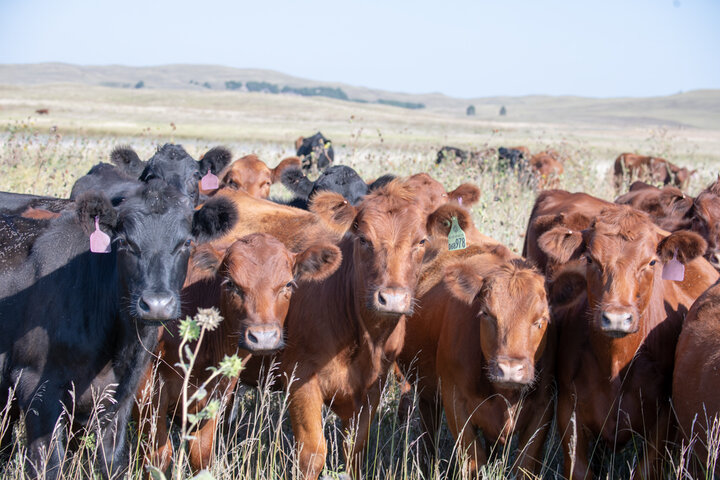Calving season is wrapping up and transitioning into breeding season. Like any other segment of beef production, breeding protocols require decisions and preparation to ensure we meet the goals of the operation.
Nutrition Status
Research has repeatedly shown that body condition correlates to many aspects of beef production starting with conception rate. A low body condition score (BCS) can cause a cow to stay in anestrus and take longer to reach estrus and the ability to come into heat. On a body condition scale of 1 to 9, a cow that calves at a 4 or less will have a post-partum cycle of greater than 80 days compared to a cow with a BCS of 5 to 6 will come into estrus by 55 days post-partum. Over-conditioned cows (BCS 8-9) may also experience failure to cycle. With lack of proper nutrition, following calving, cows may lose weight and drop in body condition resulting in a longer post-partum interval. Cows can typically breed 50 to 60 days following calving, however, first calvers may take up to 10 days longer.
Implementing A Vaccine Program
Producers may prefer to vaccinate females in the fall for convenience, however, vaccinating for bovine viral diarrhea virus (BVDV) is more effective prior to breeding to obtain a healthy pregnancy. Veterinary professionals recommend that replacement heifers should be vaccinated with at least one dose of a BVDV modified live vaccine 4 to 6 weeks prior to breeding. In this same time frame, it is also recommended that replacement heifers receive a vaccine to protect against the different variants of clostridial disease, infectious bovine rhinotracheitis (IBR), parainfluenza type 3 (PI3), bovine respiratory syncytial virus (BRSV), and leptospirosis. Implementing a proper vaccine program into your operation will decrease the risk of abortion and increase the ability to maintain a healthy pregnancy to term.
Bull Selection
Choosing genetics for your operation is one of the most important decisions that leads to long-term profitability. Factors that may play a role in bull selection include breed, cost of bull, as well as EPDs. Heifers and cows may require a different selection of bulls based on EPDs. Replacement heifers will likely need a bull with a high calving ease to limit dystocia during calving. Selecting bulls with increased milk and early growth can potentially increase profitability when marketing weaned calves. A sire’s genetic merit for milk will have lasting effects throughout the calf’s entire lifespan. Other EPDs to pay attention to, dependent on marketing goals, include, weaning weight and yearling weight. For more information on EPDs and bull selection go to Bull Selection Principles—Be an Educated Consumer
Breeding Soundness Exams (BSE)
A BSE is crucial to ensuring bulls are ready. Scrotal circumference measurement and semen quality are checked during a BSE. According to the Society of Theriogenology, 1 in every 5 bulls fail a BSE, if a failed bull is used in a production setting this could lead to open cows and fewer calves available for marketing. Along with a BSE, monitoring overall health, and soundness of feet and legs for continued ability to mate for the duration of breeding season. To read more about breeding soundness exams go to How Valu-Bull are Breeding Soundness Exams.
Have a Breeding Season Plan
A tighter breeding season can be beneficial from calving to following weaning. Higher payout is often offered with heavier, uniform groups of calves. As mentioned earlier, BCS and overall cattle health greatly affects the ability to breed in a timely, concise matter. An option to ensure a succinct calving season is a synchronization protocol. If a synchronizing program aligns with the operation’s goals research a protocol (current estrus synchronization protocols are available at Beef Reproduction Task Force Protocols) that is designed for the age of females being synchronized and fits the available resources of time, labor, and facilities.
Interviews with the authors of BeefWatch newsletter articles become available throughout the month of publication and are accessible at https://go.unl.edu/podcast.

